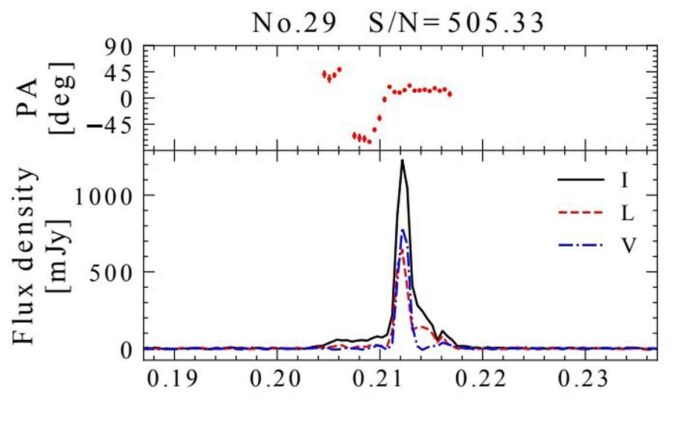Chinese astronomers have examined the single-pulse behaviour of a rotating radio transient (RRAT). It is also known as PSR J0628+0909. They have used the Five-hundred-meter Aperture Spherical radio Telescope (FAST) for this observation. The study’s findings were published on November 22 in the Monthly Notices of the Royal Astronomical Society. This study may help us better understand the mysterious nature of RRATs.
RRATs are a type of pulsar that emits sporadic radiation. The first of these objects was discovered in 2006 as sporadic appearing dispersed pulses with frequencies ranging from several minutes to several hours. The nature of these transients remains unknown. It is assumed that they are ordinary radio pulsars with strong pulses that can only be found using single-pulse searches.
PSR J0628+0909 was discovered as a single pulse in the Pulsar survey using the Arecibo L-band Feed Array (PALFA) in 2006. Six years later, the source was designated an RRAT. Its precise location was determined using the Karl G. Jansky Very Large Array (VLA). The pulse period of PSR J0628+0909 is approximately 1.24 seconds and the dispersion measure is 88 pc/cm3. According to previous observations, this pulsar has a burst rate of about 141 per hour and a pulse width at half maximum of 10 milliseconds.
A group of astronomers led by Jui-An Hsu of Peking University in Beijing, China, investigated single pulses of PSR J0628+0909. Hsu wanted to learn more about the nature of this source. Astronomers used FAST’s L-band 19-beam receiver as it covers the frequency range of 1.0 to 1.5 GHz.
Astronomers analysed the peak flux distribution of single pulses. It revealed that the distribution requires three log-normal components. Scientists then compared to previous results and detected components are at least a few times weaker. These findings imply that when the intrinsic pulse peak flux or energy distributions are observed with greater sensitivity, they become more complex.
The astronomers also discovered weaker pulse signals buried beneath the radiometer noise floor. Similar weak pulses have been reported in other RRATs as well. So, this finding lends credence to the hypothesis that RRATs are low-flux pulsars.
The study also discovered that the relationship between waiting time and pulse energy is relatively weak. This suggests that RRATs may use different mechanisms to generate strong single pulses than the energy store-release scenario. The event rate for single pulses of PSR J0628+0909 with signal-to-noise ratio greater than 7.0 was calculated to be around 270 per hour.

